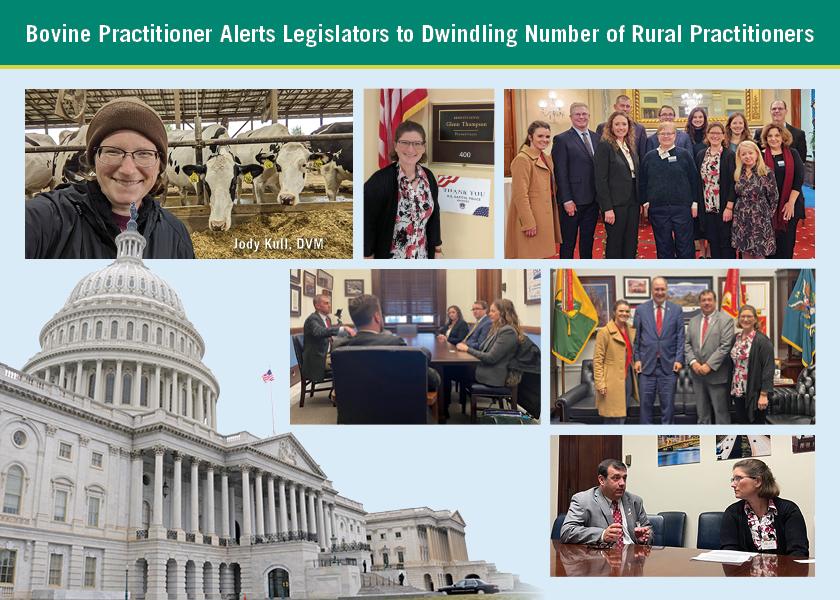DVM Alerts Legislators To Veterinary Shortage

When Dr. Jody Kull went to Washington, D.C., in late December, her No. 1 goal was to meet with legislators to discuss the dwindling number of veterinarians available today to meet the animal-health needs of U.S. farmers and ranchers.
“There are so many legislators in policy-making that are unaware of the issues in rural veterinary medicine and rural agriculture today,” says Kull, owner of Valley Mobile Veterinary Service, Danville, Pa.
“It helped to make my point that the issues were presented from someone experiencing the rural veterinary experience firsthand,” she adds, noting that her group met with officials in 12 different offices.
New Report Casts Light On The Issue
The severity of the veterinary shortage was underscored recently by a Farm Journal Foundation report, Addressing the Persistent Shortage of Food Animal Veterinarians and Its Impact on Rural Communities.
Authored by Clinton Neill, an economist at Cornell University, the report says more than 500 counties across the U.S. have a shortage of food animal veterinarians. Only 3% to 4% of new veterinary school graduates pursue livestock or other food-animal practice areas today. That is a stark decline from 40 years ago when about 40% of graduates specialized in this area.
Kull is encouraging farmers, livestock owners and other veterinarians to reach out to their state and local legislators to address the veterinary shortage and look for ways to resolve it.
“My follow-up emails with my state senator’s staff have all been positive, and we have future meetings set up to discuss the issue further,” she says.







